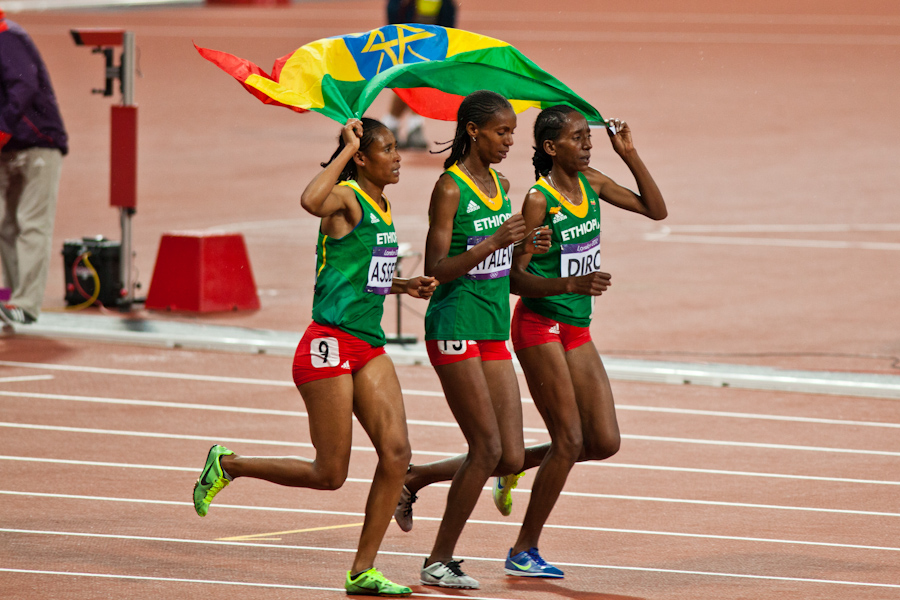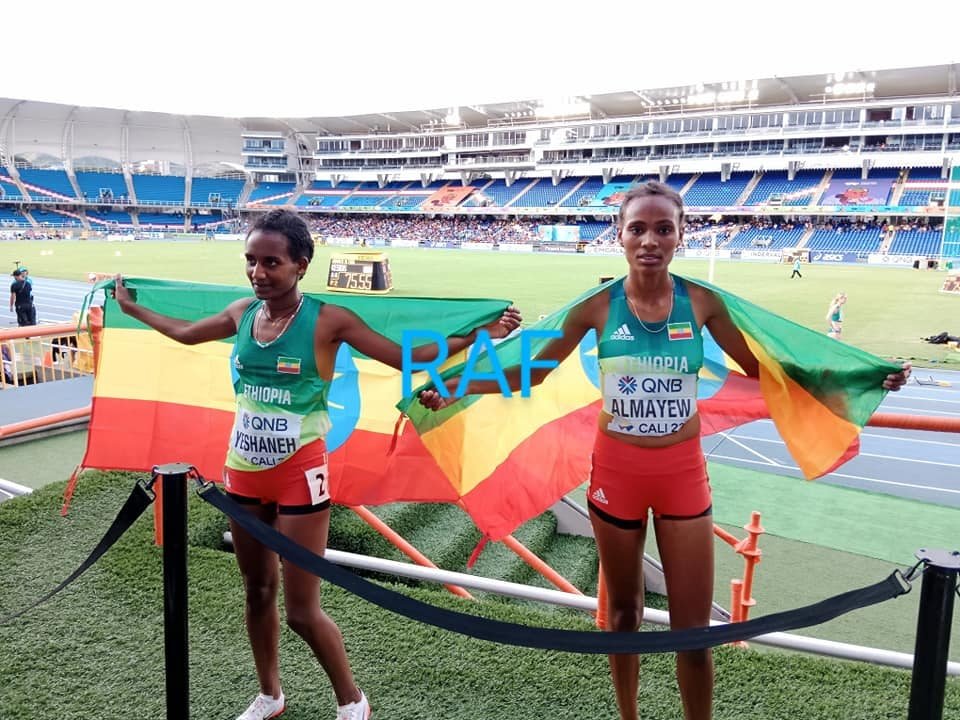History of Ethiopian Steeplechase Dominance

The Ethiopian steeplechase legacy is a testament to the nation’s enduring prowess in endurance athletics. From humble beginnings, Ethiopian athletes have etched their names in the annals of steeplechase history, establishing a dominance that continues to inspire awe and admiration. This dominance is a culmination of historical, cultural, and training factors, each contributing to the rise of a formidable force in the world of steeplechase.
Historical Factors
The roots of Ethiopian steeplechase success can be traced back to the nation’s rich history of long-distance running. Ethiopia’s diverse terrain, characterized by mountainous landscapes and challenging elevations, has traditionally fostered a culture of endurance. For centuries, Ethiopians have engaged in long-distance running for various purposes, including transportation, trade, and even warfare. This inherent endurance, coupled with a strong tradition of running, has provided a fertile ground for the development of exceptional steeplechase athletes.
Timeline of Notable Athletes and Achievements
The emergence of Ethiopian steeplechase dominance is marked by a series of remarkable athletes who have consistently shattered records and raised the bar for the discipline.
- 1960s: The early years witnessed the rise of Abebe Bikila, a legend who transcended the steeplechase, winning the 1960 and 1964 Olympic marathons. Bikila’s achievements ignited a passion for running in Ethiopia, laying the foundation for future generations of steeplechase stars.
- 1980s: This decade saw the emergence of Getaneh Tessema, a pioneer who established Ethiopia’s presence in the steeplechase. Tessema’s success at the 1988 Olympic Games, where he finished fourth, signaled the beginning of Ethiopia’s consistent presence in the steeplechase.
- 1990s: The 1990s witnessed the emergence of Moses Kiptanui, a Kenyan runner who dominated the steeplechase, setting world records that stood for years. Kiptanui’s influence, however, spurred Ethiopian athletes to strive for greater heights.
- 2000s: The 2000s marked a watershed moment for Ethiopian steeplechase, with the emergence of a new generation of athletes. Saif Saaeed Shaheen, born in Ethiopia but representing Qatar, shattered Kiptanui’s world record in 2004. Brimin Kipruto, a Kenyan runner, further solidified Kenya’s dominance in the steeplechase. However, Ethiopia’s resurgence was evident in the success of athletes like Ezekiel Kemboi, who became a world champion in 2009, and Gebre Gebremariam, who won the 2009 World Championships in Berlin.
- 2010s: The 2010s witnessed a period of remarkable consistency for Ethiopian steeplechasers. Conseslus Kipruto, a Kenyan runner, continued to dominate the discipline, but Ethiopia’s Jairus Birech and Getnet Wale emerged as formidable contenders, securing multiple world championships and Olympic medals.
- 2020s: The current generation of Ethiopian steeplechasers, led by Lamecha Girma, continues to push the boundaries of the discipline. Girma’s victory at the 2019 World Championships and his world record in 2021 solidify Ethiopia’s position as a global powerhouse in steeplechase.
Training Methods and Coaching Strategies
The success of Ethiopian steeplechasers is not solely attributed to natural talent; it is a testament to the meticulous training methods and coaching strategies employed by Ethiopian programs.
- High-Altitude Training: Ethiopia’s mountainous terrain provides a natural advantage for endurance athletes. Training at high altitudes, where oxygen levels are lower, forces the body to adapt, improving red blood cell count and overall oxygen-carrying capacity. This physiological adaptation enhances athletes’ endurance and stamina, crucial for the demanding steeplechase.
- Emphasis on Endurance: Ethiopian training programs prioritize the development of endurance, recognizing its importance in the steeplechase. Athletes engage in extensive long-distance runs, often covering distances far exceeding the steeplechase race. This focus on building a strong aerobic base lays the foundation for success in the demanding event.
- Strength and Speed Training: While endurance is paramount, Ethiopian programs also incorporate strength and speed training to enhance performance. Athletes engage in weight training to build muscle strength and power, crucial for overcoming obstacles and maintaining speed throughout the race.
- Technical Refinement: Ethiopian coaches emphasize the importance of technical proficiency in the steeplechase. Athletes are rigorously trained in the proper technique for clearing the water jump, a crucial element of the race. Coaches pay meticulous attention to stride length, water jump technique, and overall race strategy, ensuring athletes are equipped to navigate the challenging course with precision and efficiency.
Physiological and Biomechanical Factors

The dominance of Ethiopian athletes in the steeplechase is not merely a result of their unwavering determination and relentless training. It is a complex interplay of physiological and biomechanical factors that contribute to their success. These factors, when combined, provide Ethiopian athletes with a unique advantage on the steeplechase track.
Physiological Characteristics
Ethiopian steeplechase athletes possess distinct physiological characteristics that set them apart. These characteristics play a crucial role in their ability to excel in this demanding event.
- High VO2 Max: Ethiopian athletes generally exhibit a higher VO2 max, the maximum amount of oxygen the body can utilize during exercise, compared to athletes from other nationalities. This allows them to maintain a high pace for extended periods, particularly during the long stretches between obstacles.
- Efficient Lactate Threshold: They also have a higher lactate threshold, the point at which lactate accumulation in the blood starts to increase rapidly. This enables them to run at a faster pace for longer before experiencing fatigue, a significant advantage in a race with multiple obstacles and challenging terrain.
- High Red Blood Cell Count: Ethiopian athletes often have a higher red blood cell count, which increases their oxygen-carrying capacity. This is particularly advantageous at high altitudes, where oxygen levels are lower, contributing to their endurance and ability to perform at optimal levels.
- Lean Body Mass: The lean body mass of Ethiopian athletes, with lower body fat percentage, aids in efficient energy utilization and reduces the energy expenditure required for running, giving them a crucial edge in the demanding steeplechase.
Biomechanical Advantages
The biomechanics of running and obstacle clearance play a vital role in the steeplechase. Ethiopian athletes exhibit specific biomechanical characteristics that contribute to their success.
- Efficient Running Gait: Ethiopian athletes often possess a natural running gait with a long stride length and a high cadence, allowing them to cover ground efficiently and maintain a fast pace. This is particularly advantageous in the steeplechase, where athletes must maintain a high speed while navigating obstacles.
- Powerful Leg Muscles: Ethiopian athletes typically have powerful leg muscles, developed through years of training and a natural predisposition for endurance running. These strong muscles enable them to propel themselves over obstacles with ease and maintain a high speed throughout the race.
- Excellent Balance and Coordination: Their exceptional balance and coordination allow them to navigate the challenging obstacles with precision and agility, minimizing time lost and maximizing efficiency. This ability to maintain balance and coordination is crucial for maintaining speed while clearing obstacles.
Obstacle Clearance Techniques
Ethiopian steeplechase athletes have developed specific techniques and strategies for overcoming the obstacles efficiently. These techniques are a testament to their understanding of the race and their ability to adapt their movements for optimal performance.
- The “Ethiopian Leap”: This technique involves a powerful jump over the water barrier, using a combination of leg strength and arm swing to propel themselves over the obstacle. This technique minimizes time spent in the air, allowing them to maintain a high pace and regain their running rhythm quickly.
- The “Water Jump”: When clearing the water barrier, Ethiopian athletes often use a technique called the “water jump,” where they aim to land with their feet in the water, minimizing the impact and reducing the risk of injury. This technique is a testament to their understanding of the biomechanics of water impact and their ability to control their landing.
- The “High-Step”: For the hurdle, Ethiopian athletes often utilize a technique called the “high-step,” where they step over the hurdle with a high leg lift, maximizing clearance and minimizing the impact on their legs. This technique allows them to maintain their speed and rhythm while clearing the hurdle.
Cultural and Societal Influences

The Ethiopian steeplechase dominance is not solely a product of physiological and biomechanical factors; it is deeply intertwined with the cultural and societal fabric of the nation. The pursuit of steeplechase success is deeply rooted in the Ethiopian culture, where running is an integral part of daily life and a source of national pride.
Impact of Ethiopian Running Traditions
The long-distance running tradition in Ethiopia is deeply ingrained in the culture. The country’s diverse terrain, including high altitudes and rugged landscapes, has shaped the physical endurance of its people. Children often walk long distances to school or to fetch water, which contributes to their natural stamina. The tradition of running is also deeply embedded in cultural events and festivals, such as the annual “Eritrean Marathon” in Asmara, which is a testament to the enduring legacy of running in Ethiopian society.
Influence of Role Models
The success of Ethiopian athletes on the global stage has inspired generations of young runners. Athletes like Haile Gebrselassie, Kenenisa Bekele, and Tirunesh Dibaba have become iconic figures, symbolizing the country’s prowess in distance running. These role models provide a powerful source of motivation and inspiration, encouraging young Ethiopians to pursue their dreams of athletic excellence. The influence of these role models extends beyond individual achievement; it fosters a collective sense of pride and national identity.
Economic and Social Benefits of Steeplechase Success, Ethiopian steeplechase
The success of Ethiopian steeplechasers brings significant economic and social benefits to the nation. International recognition and victories in major competitions boost national pride and enhance the country’s global image. The achievements of these athletes also contribute to the development of sports infrastructure and training facilities, creating opportunities for future generations of athletes. Moreover, the economic benefits associated with steeplechase success extend beyond direct financial gains. It attracts international investment in sports development and tourism, contributing to the overall economic growth of the nation.
Ethiopian steeplechase runners are known for their remarkable endurance and tactical prowess, often pushing the limits of human capability. One name that resonates deeply within this tradition is Girma Runner , a pioneer who redefined the art of the steeplechase.
His legacy continues to inspire new generations of athletes, who strive to emulate his unwavering commitment to excellence, further solidifying the dominance of Ethiopian steeplechase runners on the world stage.
The Ethiopian steeplechase, a spectacle of athleticism and endurance, requires a unique blend of speed and agility. After a grueling race, imagine settling into the comfort of an industrial leather accent chair , its sturdy frame and plush leather offering a welcome respite.
The chair’s rugged design echoes the resilience of the athletes, while its timeless elegance complements the grandeur of the sport.